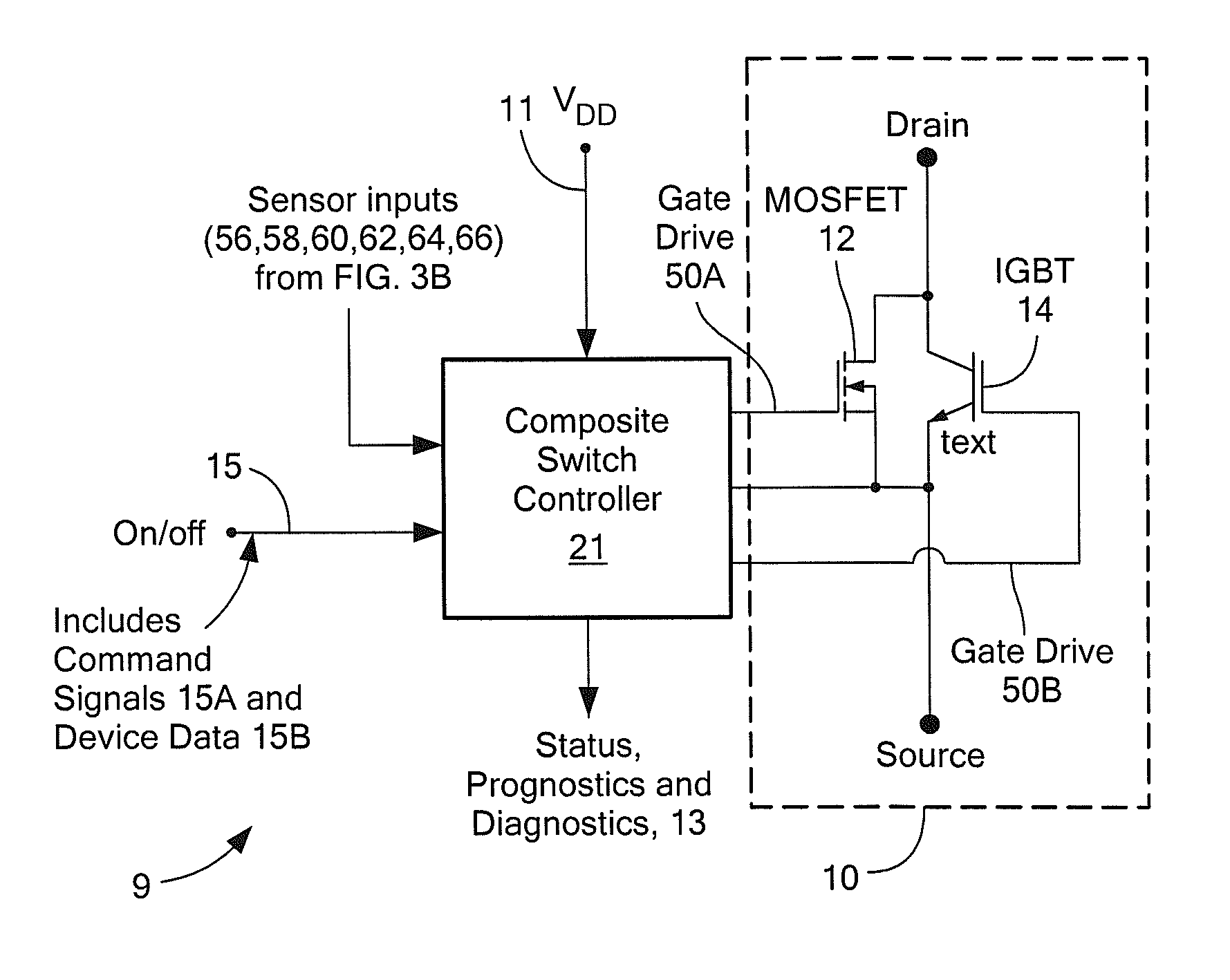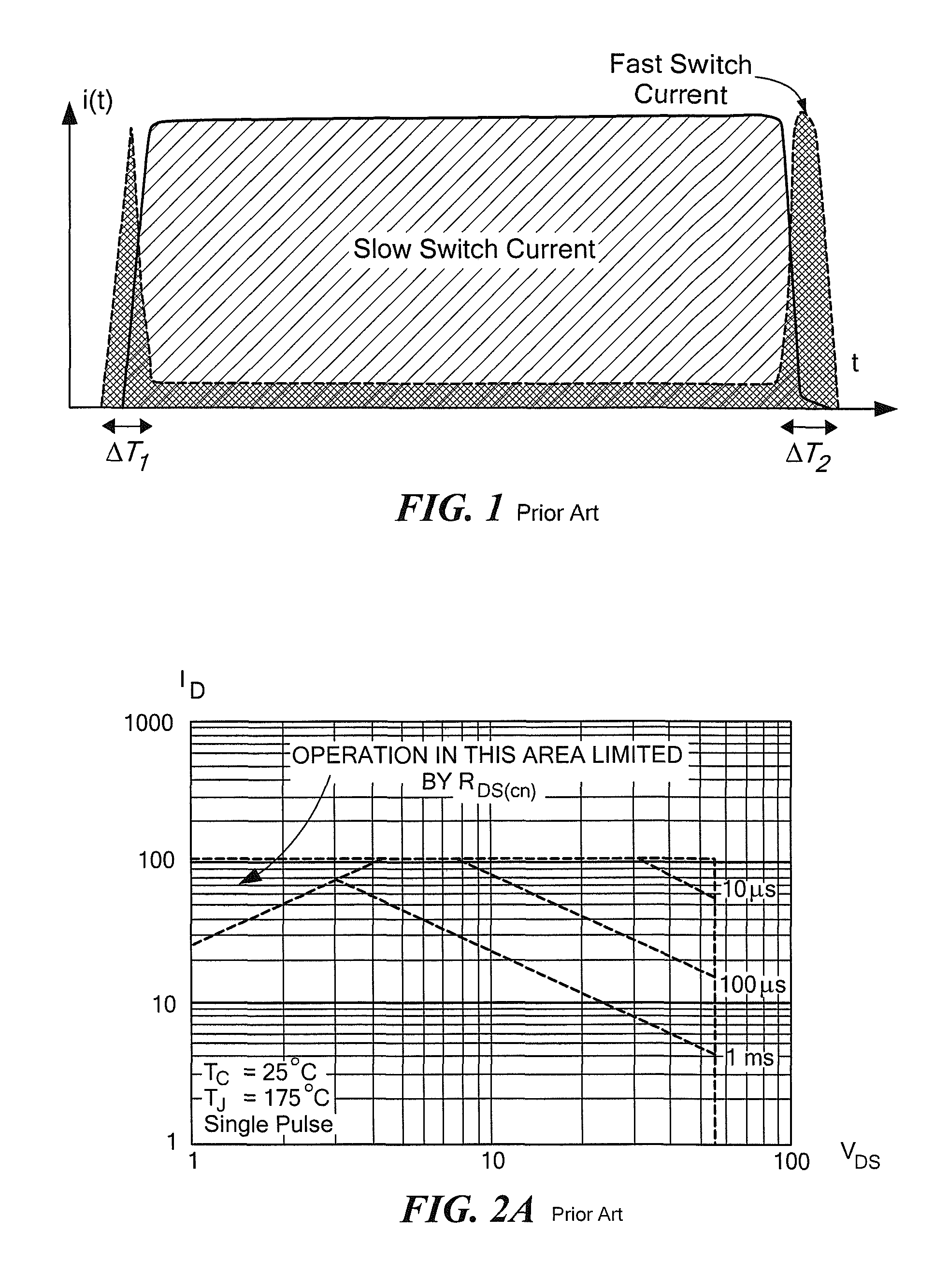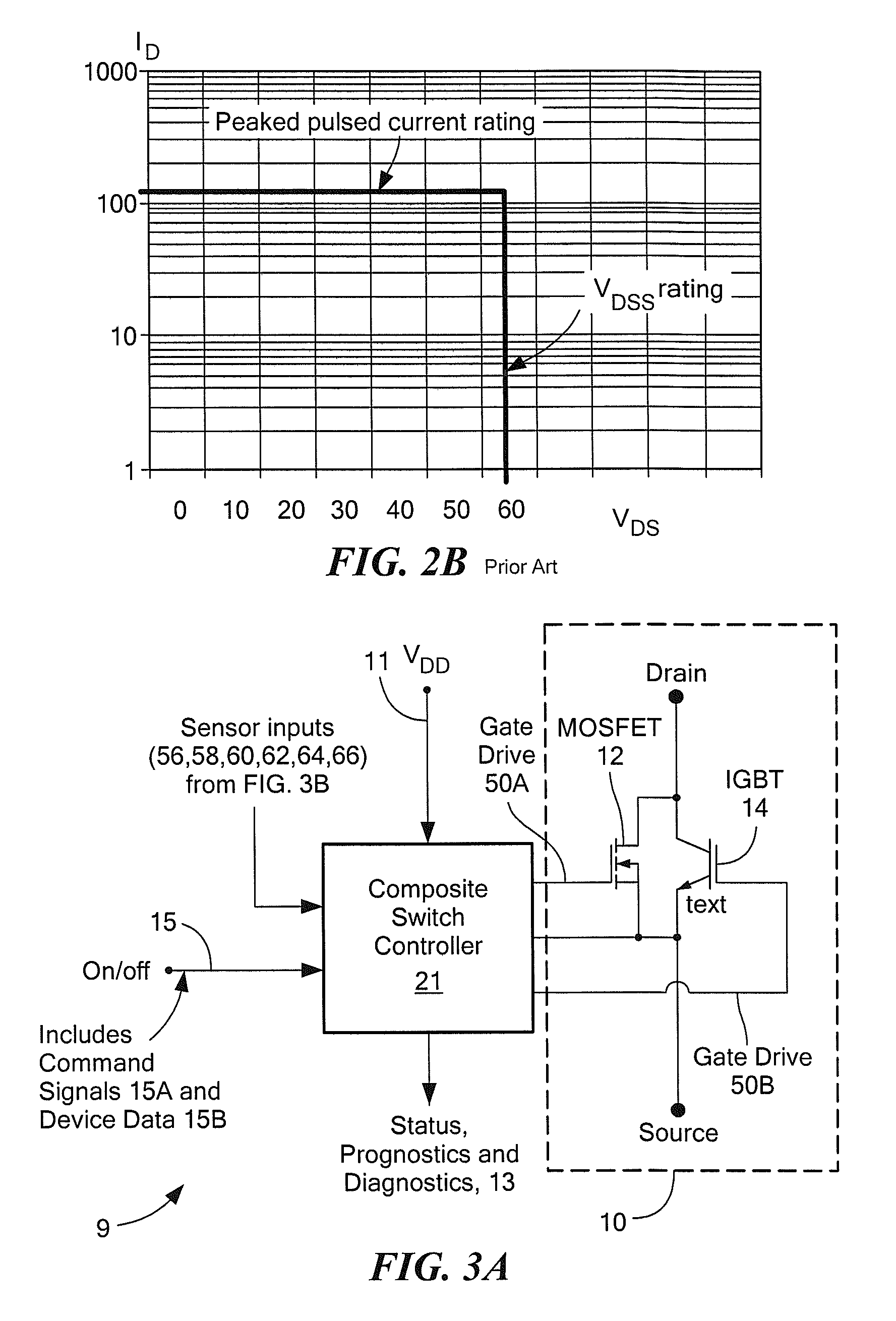Adaptive gate drive control method and circuit for composite power switch
a technology of composite power switch and gate drive control, which is applied in the direction of process and machine control, pulse technique, instruments, etc., can solve the problems of reducing the overall efficiency, affecting the reliability of the hybrid switch, and affecting the overall efficiency, so as to improve reliability, optimize the performance of the hybrid switch, and achieve high efficiency
- Summary
- Abstract
- Description
- Claims
- Application Information
AI Technical Summary
Benefits of technology
Problems solved by technology
Method used
Image
Examples
Embodiment Construction
[0083]The description below explains certain features of the invention by providing examples using MOSFET and IGBT devices, properties and characteristics. It should be understood, however, that the concepts and embodiments of the invention described herein apply to many other types of semiconductor devices, including but limited to controllable semiconductors, three terminal semiconductors, and such power semiconductors as Bipolar Junction Transistors (BJTs), Insulated Gate Bipolar Transistors (IGBTs), and controllable thyristors, including Gate Turnoff (GTO) thyristors, Gate-Commutated Thyristor (GCT), Integrated Gate-Commutated Thyristor (IGCT) and Emitter Turnoff (ETO) thyristors.
[0084]FIGS. 3A and 3B show an illustrative block diagram 9 for a hybrid switch 10 with adaptive gate driver and controller 21, in accordance with one embodiment of the invention. FIG. 3A is the simplified block diagram view, and FIG. 3B is the more detailed block diagram view. In addition, in both FIG. ...
PUM
 Login to view more
Login to view more Abstract
Description
Claims
Application Information
 Login to view more
Login to view more - R&D Engineer
- R&D Manager
- IP Professional
- Industry Leading Data Capabilities
- Powerful AI technology
- Patent DNA Extraction
Browse by: Latest US Patents, China's latest patents, Technical Efficacy Thesaurus, Application Domain, Technology Topic.
© 2024 PatSnap. All rights reserved.Legal|Privacy policy|Modern Slavery Act Transparency Statement|Sitemap



